- News
- Reviews
- Bikes
- Accessories
- Accessories - misc
- Computer mounts
- Bags
- Bar ends
- Bike bags & cases
- Bottle cages
- Bottles
- Cameras
- Car racks
- Child seats
- Computers
- Glasses
- GPS units
- Helmets
- Lights - front
- Lights - rear
- Lights - sets
- Locks
- Mirrors
- Mudguards
- Racks
- Pumps & CO2 inflators
- Puncture kits
- Reflectives
- Smart watches
- Stands and racks
- Trailers
- Clothing
- Components
- Bar tape & grips
- Bottom brackets
- Brake & gear cables
- Brake & STI levers
- Brake pads & spares
- Brakes
- Cassettes & freewheels
- Chains
- Chainsets & chainrings
- Derailleurs - front
- Derailleurs - rear
- Forks
- Gear levers & shifters
- Groupsets
- Handlebars & extensions
- Headsets
- Hubs
- Inner tubes
- Pedals
- Quick releases & skewers
- Saddles
- Seatposts
- Stems
- Wheels
- Tyres
- Health, fitness and nutrition
- Tools and workshop
- Miscellaneous
- Cross country mountain bikes
- Tubeless valves
- Buyers Guides
- Features
- Forum
- Recommends
- Podcast
review
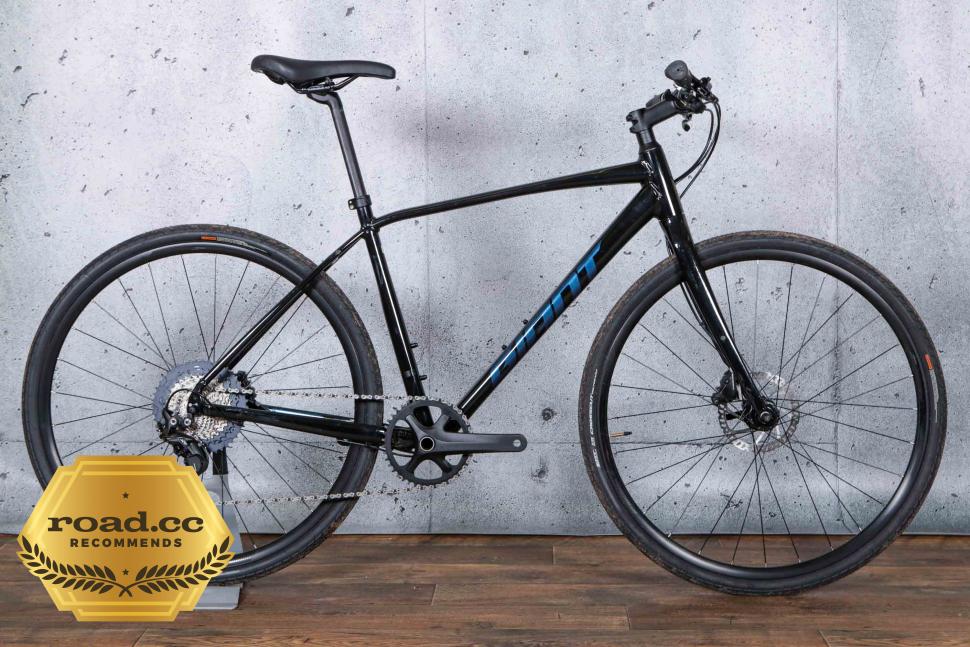 Giant Escape 0 Disc
Giant Escape 0 Disc£899.00
VERDICT:
Great comfort, quality braking, good gears and bags of all-round practicality – Giant shows there's life in the hybrid yet
Quality frameset
Accurate gear shifting
Light-action brakes
Great comfort
Versatility and practicality
Single chainring limits top gear
Weight:
10,500g
Contact:

This product has been selected to feature in road.cc recommends. That means it's not just scored well, but we think it stands out as special. Go to road.cc recommends
At road.cc every product is thoroughly tested for as long as it takes to get a proper insight into how well it works. Our reviewers are experienced cyclists that we trust to be objective. While we strive to ensure that opinions expressed are backed up by facts, reviews are by their nature an informed opinion, not a definitive verdict. We don't intentionally try to break anything (except locks) but we do try to look for weak points in any design. The overall score is not just an average of the other scores: it reflects both a product's function and value – with value determined by how a product compares with items of similar spec, quality, and price.
What the road.cc scores meanGood scores are more common than bad, because fortunately good products are more common than bad.
- Exceptional
- Excellent
- Very Good
- Good
- Quite good
- Average
- Not so good
- Poor
- Bad
- Appalling
The Giant Escape 0 Disc is functional but fun, good value and versatile. Its quality frame, full-carbon fork and decent weight make it a very attractive proposition for £899, whether you're sticking to the traditional commuting, fitness and day-to-day riding duties that hybrids are known for, or loading it up for bigger, longer and more adventurous days out, because the Escape part of its name isn't a misnomer. It's comfortable on the roughest of roads and will cope with a variety of unsurfaced routes without complaint.
The hybrid has for many years been seen as the runt of the cycling world. Road bikes and mountain bikes are the picks of the litter; gravel, bikepacking and touring bikes can lead you to a world of adventure, but the hybrid? A more humble commuter, ride-about-town and leisure riding sort of thing. In other words, exactly the sort of cycling that most British riders do most of the time. Which is probably why Giant prefers to call its Escape 'a versatile flat-bar all-rounder', a bike you can use for your 'commute to work, ride to class' and to find new adventures on'.
> Find your nearest dealer here
But exactly as with the hybrid's more exotic brethren, the quality of hybrid bikes has improved over the last few years, gaining trickle-down technology – including hydraulic brakes, 1x transmission and tubeless-ready wheels and tyres – that should improve performance and add to the enjoyability of the ride.
Ride
Ah, Giant's Escape is a dull-as hybrid, so it'll be boring and functional, then? Well, it's certainly functional – I fitted a rear rack and carried half a week's shopping in a couple of rammed panniers. But don't forget the Escape part of the bike's name…
I took this for a Sunday afternoon spin along the canal towpath – okay, the whole trip was only 35 or so miles, but then again it was about 30°C. The bike proved faultless on the dry and dusty surface, the tyres gripping well, and the saddle – aided by the flex-giving carbon seatpost – proving comfortable.
The Escape coped equally well with loose gravel and, of course, tarmac on longer days out. My usual proviso with a flat-barred bike is that I'd fit forward-facing Ergon bar ends, or similar, for the extra handhold over longer excursions, as the Giant's flat bar limits your options and fatigue will set in earlier, but that's an inexpensive and easy-to-fit option.
The Escape has a good weight for a hybrid bike at this price. Okay, so 10.5kg isn't road-bike light, but it's not that weighty either – it's similar to the Tour de France-winning bikes of Miguel Indurain and Joop Zoetemelk – though those bikes would be rubbish on canal towpaths and for carrying your shopping... And most of the time, unless you're on a steep climb, a few grams here or there make very little difference.
The geometry is casual, with a laidback 71-degree head tube angle and a stretched-out 107.5cm wheelbase. Throw in 38mm-wide tyres and you'll find the Escape comfortable for both short commutes and longer leisure rides.
Its low bottom gear will get you up even steep or challenging climbs and excellent braking helps when you're descending. It's not a bike to go hurtling down Alpine descents on, but for the sort of hills most of us ride, it behaves perfectly, with good grip from the tyres and smooth, powerful and controlled braking from the hydraulic discs.
Frame and fork
Few companies in the world have more experience at producing high-quality frames – at all sorts of prices and also under names other than Giant – and unlike virtually every other large-scale bike manufacturer, Giant even makes the aluminium that it then forms into frames.
The Escape frame is made from what Giant calls Aluxx, the name for its own 6061 aluminium that's similar to that used to make most road and hybrid bikes at this sort of price, as it's reasonably inexpensive and easy to work with. Giant's Aluxx is single butted, which means the ends are thicker for greater strength where they're welded, but with narrower, lighter walls between them.
> A-Z of cycling jargon: find out what over 150 strange terms really mean
The frame itself is compact – well, this is a Giant – with a flattened top tube and slim, slightly curved seatstays for maximum rear-end comfort.
The seat tube is narrower at the top to house Giant's own D-Fuse 'self-align' composite seatpost. Yes, another standard, but this being Giant I don't think you'll struggle to find suitable posts for the foreseeable future. Its unusual shape does require two seatclamp bolts, but tightened to 5Nm the post stayed secure with no slipping over bumps.
The Escape has a full-carbon fork with Giant's own tapered oversize 'OverDrive' steerer, which it claims has up to 15 per cent more torsional stiffness than a straight steerer. It certainly feels solid and controlled when riding.
I always like to see a full complement of fixtures and fittings on bikes designed for day-to-day riding and Giant doesn't disappoint here. The Escape has front and rear rack mounts and mudguard mounts, complete with a rear 'non-brake' bridge drilled for a full-length mudguard, and its practical credentials are rounded out with a kickstand plate.
There's bags of clearance too, with frame and fork accommodating 45mm tyres. I even found a use for the two plastic washers on the seat tube's bottle bosses – they stopped the struts of my old Tubus rack making contact with the frame welds where the stays meet.
And while it may only be a hybrid (sorry, a 'versatile flat-bar all-rounder'), the Escape does have neatly internally routed gear cables and hydraulic hoses.
It does have quick-release levers rather than thru-axles, but this didn't seem to have any negative effect on the braking.
About the only absentees if you were being picky are a third set of bosses (no bento box on the top tube or third bottle cage under the down tube) and a dynamo cable drilling for the fork, but that's being ultra fussy.
Groupset
Not that long ago your bog-standard hybrid might have had a triple chainset inherited from early mountain bikes, but more recently the double chainset – usually in the form of a 50/34 compact – reigned supreme. But the last few years have seen the steady incursion of single-ring chainsets, this time inherited from the more recent generation of mountain and gravel bikes.
This has several advantages – with only one ring you save the weight of the second chainring, front derailleur and the front shifter – which makes for fewer things to go wrong too. The disadvantage is a more limited range of gearing, but with the cassette's side plate-sized 46-tooth large sprocket (listed as 42T on Giant's website) paired with a 42T chainring, the Escape's bottom gear is a fair bit lower than the 34x34 pairing of a compact with an 11-34 cassette – 24.58in compared with 27.01in. That may not look like much, but is roughly nine per cent lower, a significant difference if you live in a hilly area.
It does mean a slightly restricted top gear, but the Giant's 42x11 (103.17in) is pretty much identical to a 50x13 (103.98in). Is that especially limiting? Not for me. And probably not for most potential buyers, most of the time.
If you're riding at a cadence of 100 you'll be powering along at a shade over 30mph, and if you up your cadence to 110 you'll be hitting nearly 34mph. Okay, if you're riding down an Alpine or Pyrenean col you may spin out, and even on some of my local climbs my legs reached a speed at which they couldn't keep up, but I'd suggest that not only is this a price worth paying – for the weight loss and drivetrain simplicity – but for all but the very strongest riders it's bordering on an irrelevance.
> How to get ultra-low gearing
While the Giant doesn't boast SRAM's 'Narrow Wide' chainrings, I couldn't get the chain to misbehave with the cost-cutting ProWheel RPP chainring and Shimano cassette. Even trying to get it to jump by spinning the pedals backwards violently or multiple rapid shifts resulted in not one single unshipping of the chain; if you are concerned you could always get a chain catcher.
The only other downside is that if you've spent years riding bikes with multiple chainrings, you might find yourself reaching for the non-existent left-hand shifter. It's a habit that takes a while to shake.
While the rear mech is a higher-spec XT and the cassette Deore, the brakes are from Shimano's more budget Altus groupset, but though less expensive, the performance of the brakes is far from entry-level. They have a light two- to three-finger action, with bags of power and control.
There was occasionally a little bit of noise when you start braking but this never translated to full-on screeching or squealing. So, budget, yes, but these brakes belie their modest price.
Wheels and tyres
The Escape's wheels and tyres are both tubeless ready, and while many bike brands economise to a lesser or greater degree when it comes to tyres, these CrossCut Metros come in at £40 each – which is a pretty hefty chunk of the bike's cost. Presumably one of the advantages of speccing your own components throughout. They worked without issue on every surface I tried them on, comfortable on tarmac, and grippy on grit and towpath dirt.
The wheels, too, coped with poor (make that very poor) road surfaces, and going up and down kerbs, and the rims' 45mm maximum tyre width allows you to go wider for even more comfort or for greater off-road grip.
Finishing kit
It's pretty much a full lineup of Giant-branded kit for the Escape, from the alloy stem and bar to the handlebar grips, seatpost and saddle. And all of it is perfectly functional and well chosen for their various purposes.
The bar is wider than that on similar size bikes from Trek and Specialized, measuring a lengthy 660mm, which offers great control on climbs and on poorer surfaces, though it can make it harder to get through narrow gaps in traffic. I found the rubber grips comfortable, too.
I had no problems with the Giant Sport Comfort saddle, and the full-carbon D-profile seatpost is a useful addition to the kit, with most of Giant's competitors at this price offering round aluminium posts.
While this bike doesn't come with a kickstand, rack or mudguards, it's good to see fixtures for fitting all of these extras.
Value
Giant's Escape scores pretty decently for value against similarly specced bikes from its main competitors, though as they vary their kit it's hard to compare exactly. Cannondale's Quick 2 is based around a Shimano Sora 9-speed setup with a double chainset. As with the Escape, the Cannondale has thru-axles and hydraulic disc brakes – albeit from Tektro rather than Shimano – and has similarly laidback geometry, with a shallow head angle and long, leisurely wheelbase. But at £950 it's that bit more expensive than the Escape. That said, I think the gold-coloured Canny outscores the more sober Giant for looks, Giant seeming to have no other paint than black or grey on its shelves this year...
Specialized's Sirrus 3 also has a lot in common with the Giant, including a muted, mainly black colour scheme. Disc brakes, thru-axles, shallow head angle, long wheelbase... there's a familiar theme developing. But as with the Cannondale Quick 2 it's a twin-chainring 9-speed Sora setup and Tektro brakes, and comes with a £950 price tag.
The three bikes that really challenge Giant's Escape for value are Trek's FX Disc 3, Pinnacle's Neon 2 and the Merida Speeder 200, all at the same price of £775. The Trek does have a lower-spec Acera groupset than the Giant, though they share the same brakes and very similar geometry.
> Buyer’s Guide: 8 of the best 2021 new-generation hybrids
Evans's Pinnacle brand has gone for a road-biased groupset for its Neon 2, but a predominantly Shimano 105 drivetrain is very, very good at the Pinnacle's modest price, especially when paired with Shimano's hydraulic disc brakes. Pinnacle does cut costs with its fork, however, plumping for aluminium rather than carbon.
When I tested the Merida Speeder 200 earlier this year it really impressed me, easily living up to its billing as a sporty and comfortable bike. As with Giant's Escape, I found this pretty much ideal for all sorts of urban and suburban riding, and as with the Giant, it has an aluminium frame, a carbon fork with a tapered steerer and wide – or wide-ish – 32mm tyres, though they weren't that impressive on wet roads.
> 7 of the best cheap hybrid bikes 2021 – daily transport from around £200
All told, though, I think the Giant is well worth the money, especially considering the all-round quality of its ride, its simple 1x shifting and well-chosen components. I found it such an really enjoyable ride it's one I would turn to even after I'd finished testing it.
Verdict
Great comfort, quality braking, good gears and bags of all-round practicality – Giant shows there's life in the hybrid yet
road.cc test report
Make and model: Giant Escape 0 Disc
Size tested: Med, 58
About the bike
List the components used to build up the bike.
Frame ALUXX-Grade Aluminium, thru-axle
Fork Advanced-Grad Composite, composite OverDrive steerer, thru-axle
Handlebar Giant Sport XC 31.8mm
Stem Giant Contact, 8-degree 31.8mm
Seatpost Giant D-Fuse, composite
Saddle Giant Sport Comfort
Shifters Shimano Deore
Front derailleur NA
Rear derailler Shimano Deore
Brakes Shimano MT200 hydraulic disc
Cassette Shimano MS5100-11, 11-46
Chain KMC X11
Chainset ProWheel RPP, 42T
Bottom bracket Cartridge
Wheels Giant GX wheelset
Tyres Giant CrossCut Metro Easy Ride tubeless, 700x38c
Tell us what the bike is for and who it's aimed at. What do the manufacturers say about it? How does that compare to your own feelings about the bike?
Giant says of the Escape 0 Disc that it's "a versatile flat-bar all-rounder [that] can get your legs spinning and motivate you to be active every day. Commute to work, ride to class, find new adventures in your daily routine". It calls it "totally fun to ride", and says that its new carbon seatpost and "high-quality composite fork" are great for smoothing out rough roads, absorbing shocks and vibrations, and giving you a smoother, more comfortable ride... Whatever road or path you choose, Escape Disc is ready to roll."
And Giant has summed it up pretty succinctly. It's practical, carries loads without issue and the wide tyres and carbon seatpost make it a super-comfortable cruiser for both short commute-type rides and more adventurous journeys.
Though Giant eschews the use of the term, it's essentially what most of us would call a 'hybrid', a bike with a flat handlebar for commuting, leisure, fitness riding and the like. And this really does cover all bases very well indeed. I found it comfortable, practical for carrying loads and suitable for gentle off-road riding such as towpaths. I also found it a really enjoyable ride, one I would turn to even after I'd finished testing it.
Where does this model sit in the range? Tell us briefly about the cheaper options and the more expensive options
There are five bikes in Giant's Escape range, with the Escape 0 Disc sitting at the top. The range starts at £479 for the Escape 3 Disc, which comes with a wide-ranging triple chainset, Tourney gears and Tektro mechanical disc brakes. It looks good value for the price, and isn't that much more than a notorious 'bike-shaped object'. The £599 Escape 2 Disc has an upgrade to 46/30 Altus gearing and also manages Tektro hydraulic disc brakes. The £649 Escape 2 City Disc is much the same but has a rear rack and front and rear mudguards – a good upgrade for 50 quid. The £799 Escape 1 Disc has a carbon fork (the cheaper models have aluminium), Shimano Altus shifters, Acera and Alivio mechs and Tektro hydraulic disc brakes.
Frame and fork
Overall rating for frame and fork
8/10
Tell us about the build quality and finish of the frame and fork?
Everything about the build quality and finish is neat and without issue. I'm not convinced it's an exciting-looking bike but it's neatly welded, well equipped for fitting mudguards, racks and the like.
Tell us about the materials used in the frame and fork?
The Escape comes with a full-carbon fork with Giant's own oversized OverDrive steerer and a frame made from single-butted 6061 aluminium. Both are pretty typical materials for bikes at this price.
Tell us about the geometry of the frame and fork?
It's very much in the laid-back mode, which is ideal for day-to-day riding and longer excursions, helping the bike live up to its Escape name. The 71-degree head angle keeps the handling neutral and the stretched-out wheelbase makes the Escape a very stable ride too.
How was the bike in terms of height and reach? How did it compare to other bikes of the same stated size?
The medium-size Trek FX3 Disc and Specialized's Sirrus 3.0 are two of the Giant's most similar competitors. The medium-size Giant has a stack of 556mm and a reach of 406mm; the Trek's stack is a virtually identical 557mm and its reach 11mm longer at 397mm; the Specialized's numbers are 593mm and 398mm, making it the most relaxed of the three. Frame angles are generally pretty similar for the threesome, with 71 or 71.5-degree head angles and seat angles between 73 and 74 degrees. All three have similarly lengthy wheelbases: 1,075mm for the Giant, 1,060mm for the Trek and 1,066mm for the Specialized.
Riding the bike
Was the bike comfortable to ride? Tell us how you felt about the ride quality.
I found the Giant Escape very comfortable, which is one of the advantages of having 38mm tyres, as such a large volume of air between you and the road really smooths things out. Giant has vast experience of making compact and semi-compact frames, which ensure that a good length of the seatpost is exposed for even more comfort – and this is boosted further still by Giant's own D-shaped carbon seatpost.
Did the bike feel stiff in the right places? Did any part of the bike feel too stiff or too flexible?
It's comfortable, yes, but there was never any sense that the Escape was overly flexible. A compact frame with a small triangle and a carbon fork with an oversized steerer are made for efficiency.
How did the bike transfer power? Did it feel efficient?
Though not a performance bike there was never any sense of your power being wasted – the compact frame is stiff and efficient and there wasn't any obvious loss through the largely Shimano drivetrain either.
Was there any toe-clip overlap with the front wheel? If so was it a problem?
I had no toe overlap, and with a wheelbase 107.5cm long I feel that toe overlap is unlikely to be an issue for most riders.
How would you describe the steering? Was it lively neutral or unresponsive? Pleasingly neutral, which is just what you want from a flat bar road bike.
Tell us some more about the handling. How did the bike feel overall? Did it do particular things well or badly?
It might tend towards being slightly twitchy at very, very low speeds but once you're up and running it's pleasingly neutral – stable enough to ride without using your hands but confident when you're descending at speed, helped by consistent, powerful braking.
Which components had the most effect (good or bad) on the bike's comfort? would you recommend any changes?
I'd always spec Ergon (or similar) forward-facing bar ends to increase the number of handholds but I had no issues with the Giant's comfort. The 38mm tyres provide good cushioning and the rubber grips and Giant's own Sport Comfort saddle lived up to its name, at least as far as I was concerned.
Which components had the most effect (good or bad) on the bike's stiffness? would you recommend any changes?
There's nothing I'd change on this Escape when it comes to stiffness. The small triangle is stiff and efficient, the high-volume tyres and carbon seatpost add comfort; it's a good balance.
Which components had the most effect (good or bad) on the bike's efficiency? would you recommend any changes?
There are no obvious changes that I'd make, as the Escape balances stiffness, efficiency and comfort very well.
Rate the bike for efficiency of power transfer:
7/10
There is never any sense that your power is being wasted on the Giant.
Rate the bike for acceleration:
6/10
The acceleration is okay, but this isn't really a bike built for rapid accelerating.
Rate the bike for sprinting:
6/10
As with the acceleration, this really isn't a bike built for sprinting, though there's no lack of stiffness if you do put the hammer down.
Rate the bike for high speed stability:
7/10
Descents at over 30mph proved trouble free, with good control and stability at all times.
Rate the bike for cruising speed stability:
7/10
It's not a super-sharp sprinter but the Escape is well designed for cruising comfortably and confidently, and it never feels unstable.
Rate the bike for low speed stability:
5/10
When you're at walking pace the handling is a little lively but once over a few miles per hour it's perfectly stable.
Rate the bike for flat cornering:
6/10
Absolutely fine.
Rate the bike for cornering on descents:
7/10
No trouble on big, sweeping descents. I wouldn't hare down a Pyrenean descent but the Escape offers excellent control.
Rate the bike for climbing:
7/10
It's not especially light but the low bottom gear lets you stay in the saddle on long climbs, and the frame's stiff enough for out-of-the-saddle climbing.
The drivetrain
Rate the drivetrain for performance:
8/10
I had no problems at all with the Escape's drivetrain.
Rate the drivetrain for durability:
7/10
I've not enough experience of ProWheel's cranks and rings, but the Shimano components should last for years.
Rate the drivetrain for weight:
7/10
Rate the drivetrain for value:
7/10
I'd have preferred an all-Shimano drivetrain but had no issues with the ProWheel rings.
Tell us some more about the drivetrain. Anything you particularly did or didn't like? Any components which didn't work well together?
The whole drivetrain worked well together, with smooth and consistent gear shifting. I don't have enough experience to judge ProWheel's chainsets for their durability, and would have preferred to see a Shimano chainset as in my experience even its budget rings are good for years of use.
Wheels and tyres
Rate the wheels for performance:
8/10
Tough, wide and tubeless ready, these performed very well.
Rate the wheels for durability:
8/10
These should carry on rolling for the duration.
Rate the wheels for weight:
7/10
Rate the wheels for comfort:
8/10
Wide rims and wide tyres mean these are great over poorly surfaced roads and unsurfaced towpaths alike.
Rate the wheels for value:
7/10
Tell us some more about the wheels.Did they work well in the conditions you encountered? Would you change the wheels? If so what for?
I was very happy with the wheels and the tyres. They coped with poor (make that very poor) road surfaces, going up and down kerbs, light grit, gravel and towpaths with equal ease. The rims' 45mm maximum tyre width allows you to go wider for even more comfort or for greater off-road grip and, typical of Giant's contemporary wheels, they're tubeless ready too.
Rate the tyres for performance:
7/10
38mm of rubber meant these were fine for dropping off kerbs, big potholes, light grit and gravel – though virtually all of the testing was during dry weather.
Rate the tyres for durability:
7/10
Rate the tyres for weight:
7/10
Rate the tyres for comfort:
9/10
There was very good comfort over all sorts of surfaces.
Tell us some more about the tyres. Did they work well in the conditions you encountered? Would you change the tyres? If so what for?
The tyres worked without issue on every surface I tried them on, comfortable on tarmac and grippy on grit and towpath dirt. Giant has embraced tubeless technology as much as any of the big bike brands and both the wheels and tyres are tubeless compatible.
Controls
Rate the controls for performance:
8/10
Shimano brakes and Shimano Deore gear lever – what's not to like? Good shifting and strong braking with little effort.
Rate the controls for durability:
8/10
My experience of Shimano components at this price suggests these aren't going to need replacing any time soon.
Rate the controls for weight:
7/10
Rate the controls for comfort:
8/10
All good – no problems with the brake levers, gear levers or the handlebar grips.
Rate the controls for value:
8/10
Shimano Deore is pretty good on a bike at this price.
Tell us some more about the controls. Any particularly good or bad components? How would the controls work for larger or smaller riders?
The brake levers have a very, very light action but deliver consistently crisp and powerful braking. I've got quite small hands and found them no trouble at all to use. Gear shifting is just as straightforward – the only issue is that on the first rides I found myself reaching for a front derailleur lever that isn't there!
Anything else you want to say about the componentry? Comment on any other components (good or bad)
I'd have preferred a Shimano (or FSA) chainset to the ProWheel – not because there was any issue with the shifting, as there wasn't – but largely because I've much less experience of using ProWheel's products and don't know so much about their long-term durability. While the Shimano hydraulic brakes are very much at the budget end of things, their performance was top-dollar and I'd happily keep them.
Your summary
Did you enjoy riding the bike? Very much. Even after finishing testing I carried on riding the Giant, as it's great for short urban rides, shopping, popping into town and the like.
Would you consider buying the bike? Yep. I haven't owned a 'hybrid' but the Escape 0 Disc is really very hard to fault as a versatile, flat-barred all-rounder.
Would you recommend the bike to a friend? Yes. There's a lot to like about the Giant – comfort, practicality, gear range, quality brakes – and very little on the debit side of things. It's a pretty unexciting-looking bike, but that might reduce its appeal to bike thieves.
How does the price compare to that of similar bikes in the market, including ones recently tested on road.cc?
Giant continues its consistency for producing good-value bikes. Specs vary from company to company but the Giant comes in £100 less than Cannondale's Quick 2 and Specialized's Sirrus 3. The Cannondale has a 9-speed double Sora chainset but the geometry is similar – on looks, though, I reckon the Cannondale takes the honours. The Sirrus looks more like the Giant but has a similar spec to Cannondale's Quick.
The three bikes that are up there with the Giant when it comes to value are probably Trek's FX Disc 3, Pinnacle's Neon 2 and the Merida Speeder 200, all at the same price. The Trek has a lower-level off-road groupset while the Pinnacle has a largely Shimano 105 groupset, which is unusual at this price, and Shimano's excellent hydraulic disc brakes.
The Merida Speeder impressed me. It's similar to the Giant and is a fine all-rounder. It's perhaps slightly sportier, with 32mm rather than 38mm tyres, but is a fine urban machine at a good price.
Rate the bike overall for performance:
8/10
Rate the bike overall for value:
7/10
Use this box to explain your overall score
There's so much to like about the Giant and very, very little to criticise it for. It has a quality frame, full-carbon fork, it's a decent weight and all the components worked well. It's very good.
About the tester
Age: 57
I usually ride: 2018 Giant TCR Advanced 2 with Halo Carbaura disc wheels My best bike is:
I've been riding for: Over 20 years I ride: Every day I would class myself as: Expert
I regularly do the following types of riding: time trialling, commuting, touring, sportives, general fitness riding,
Simon has been riding since he was a nipper and more seriously since his university days way back when. He has been a cycling journalist for more than two decades and reckons he has upwards of 200,000 miles in his legs. In his time he has competed (in the loosest sense of the word) in time trials, triathlons, duathlons and a lone cyclo-cross; he has been a long-distance commuter for decades – on road and canal towpath. He has also toured extensively in Laos, Cambodia, Thailand, Malaysia and has ridden 4,000km from Cairns to Melbourne in Australia, and the 700km from Picton to Dunedin in New Zealand. If his legs carry on working, he'd like to ride from Perth to Sydney...
Latest Comments
- mdavidford 30 min 2 sec ago
But he was clearly a wrong 'un - it's obvious from the fact that he had no previous convictions!
- HarrogateSpa 32 min 18 sec ago
I quite liked the Cycling song/video, but I couldn't understand what was said at the end....
- andystow 55 min 58 sec ago
I'm 53, and gained most of my cycling fitness after age 43. I've never done an FTP test nor used a power meter, but based on occasionally asking...
- ubercurmudgeon 57 min 10 sec ago
I doubt you'll need to worry about facing that particular dilemma: by the time you find yourself in need of a pump, it'll probably have fallen off...
- mdavidford 1 hour 14 min ago
Except that presumed liability is usually a matter of civil liability, so you wouldn't be prosecuted as a result of it (though you may be held...
- brooksby 1 hour 42 min ago
Didn't know that, thanks. I wonder whether he also pushed for regulation of sex work…
- brooksby 1 hour 45 min ago
I always find it surprising how little often needs to be changed, to have the bike feel more comfortable. Often literally a case of lifting...
- Rendel Harris 2 hours 3 min ago
Well, I finally got some response from my repeated requests as to what was happening with the alleged database and was supplied with a link which...
- brooksby 3 hours 33 min ago
Thanks - was about to say that.
- Miller 4 hours 46 min ago
Don't buy American.




























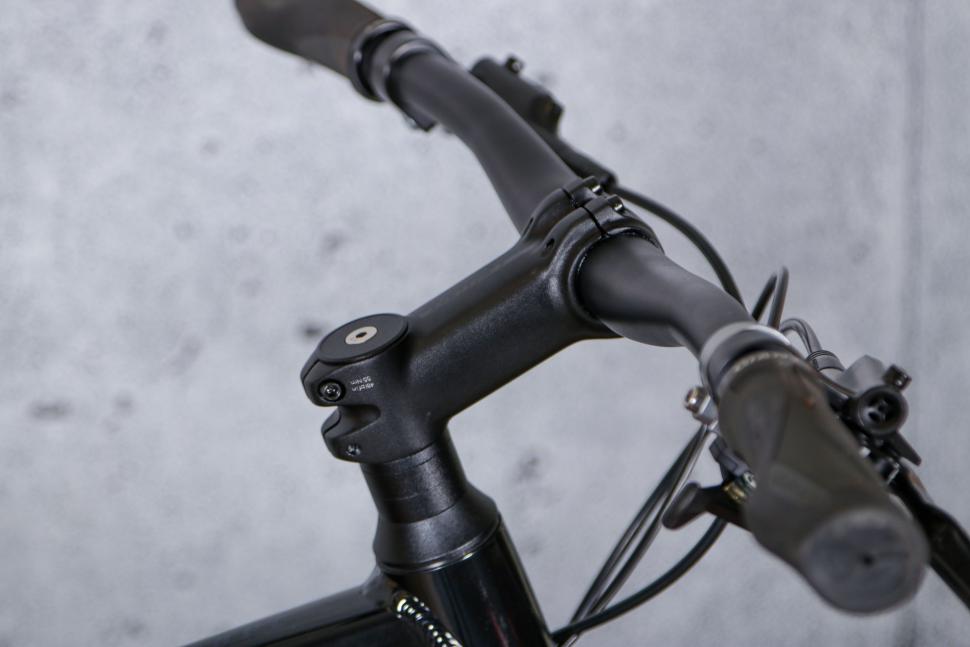
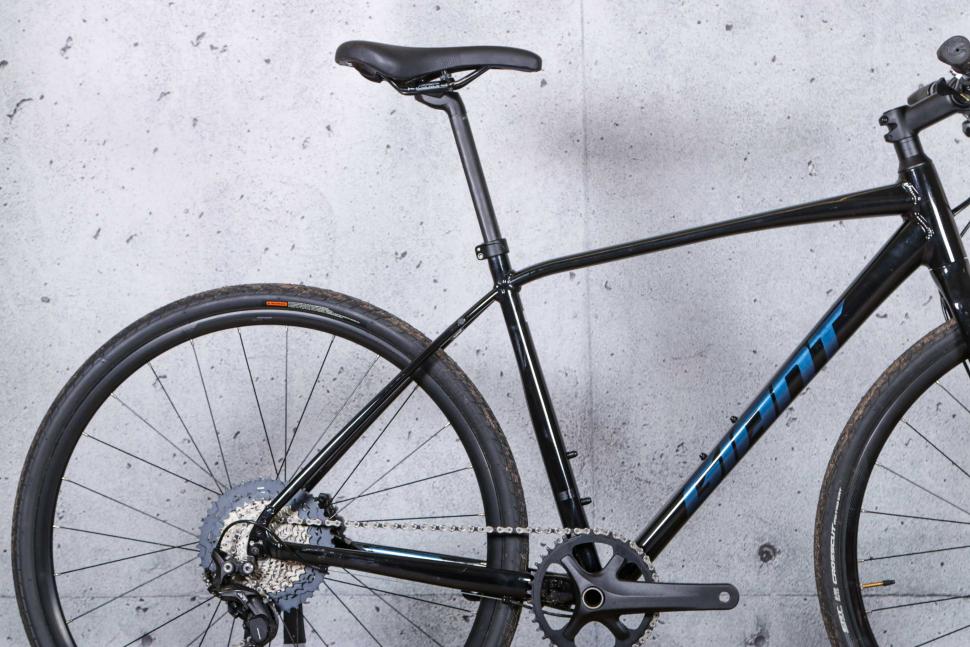
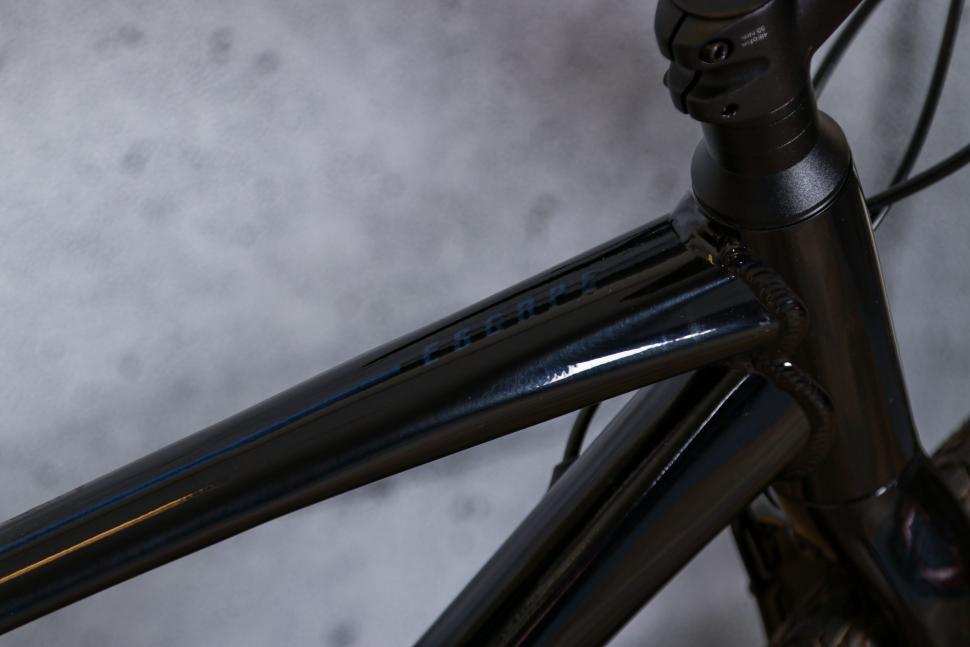
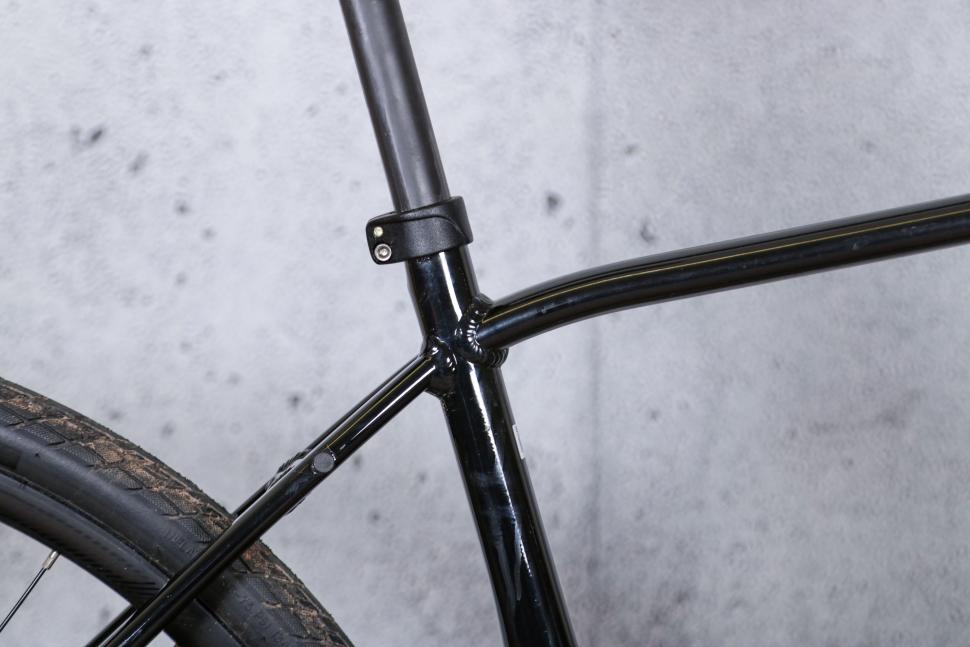
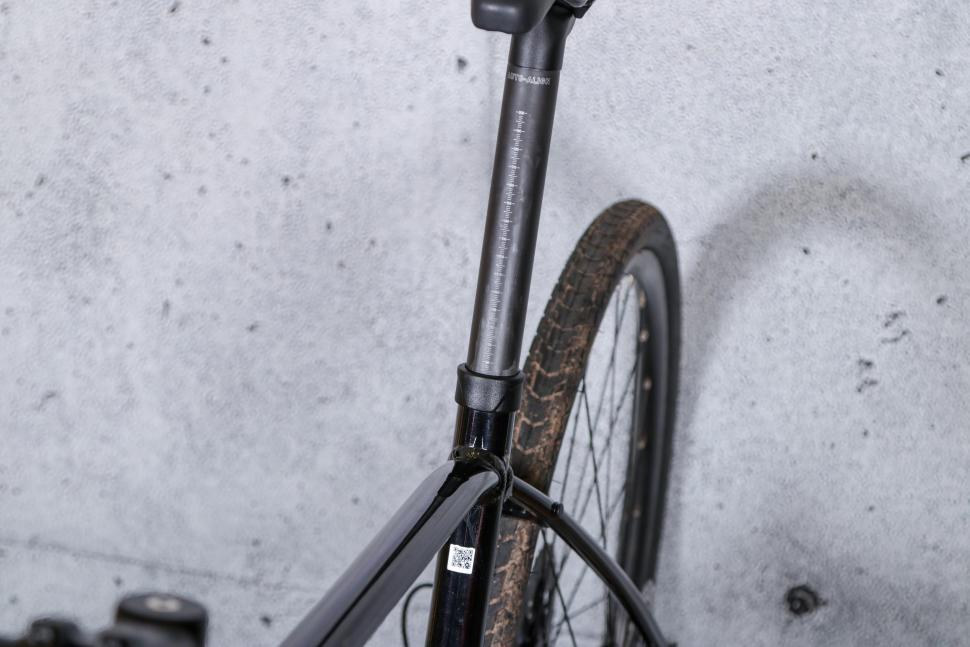
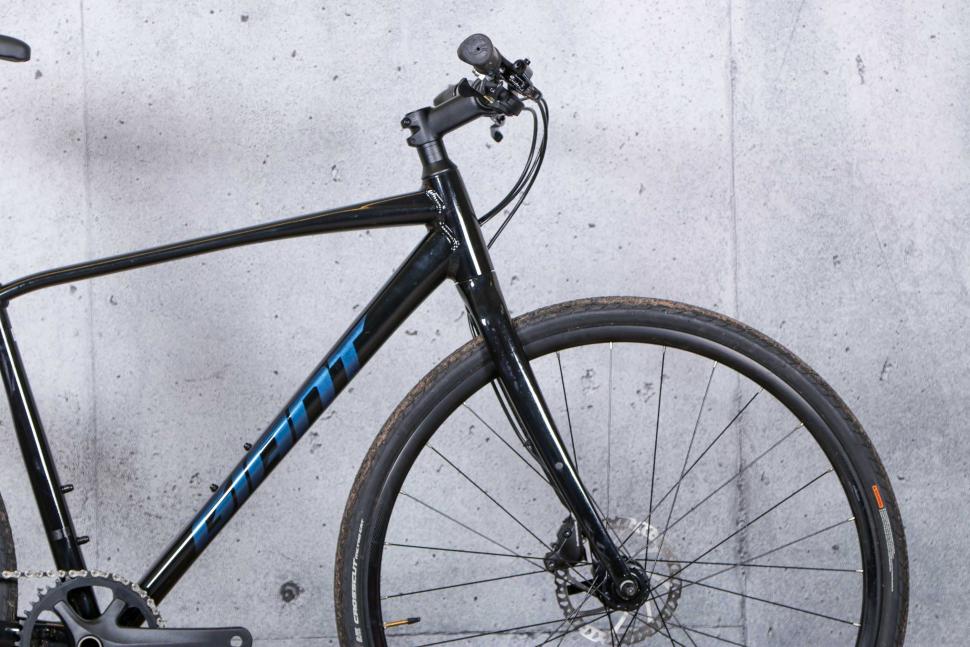

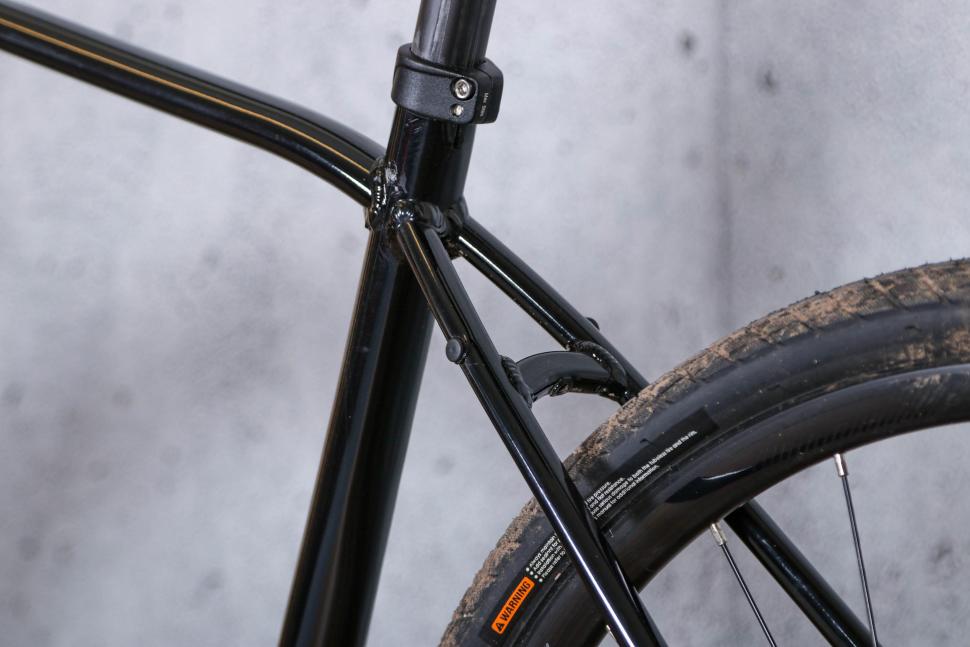

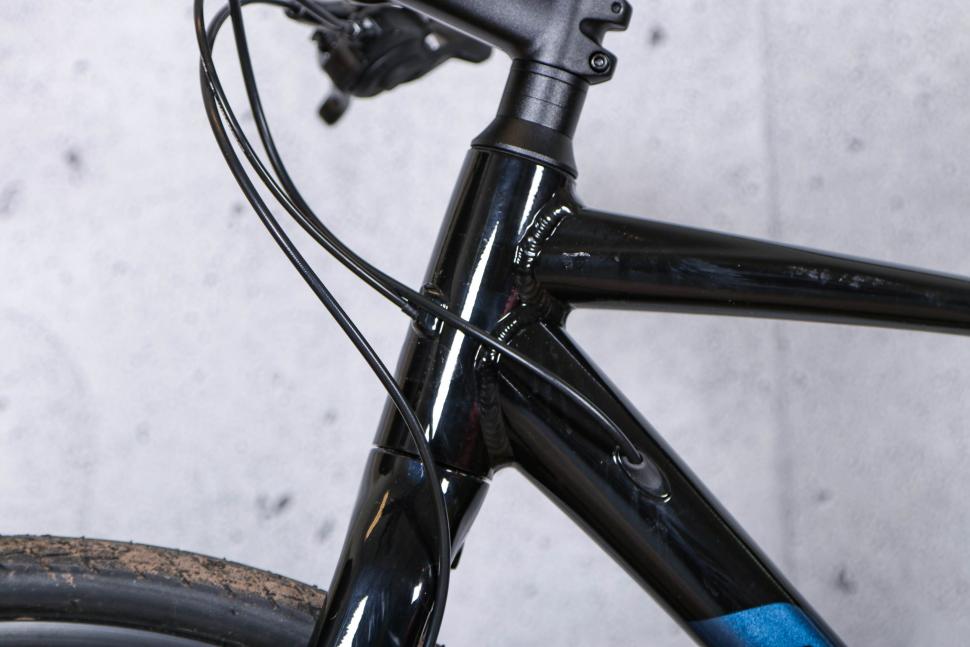
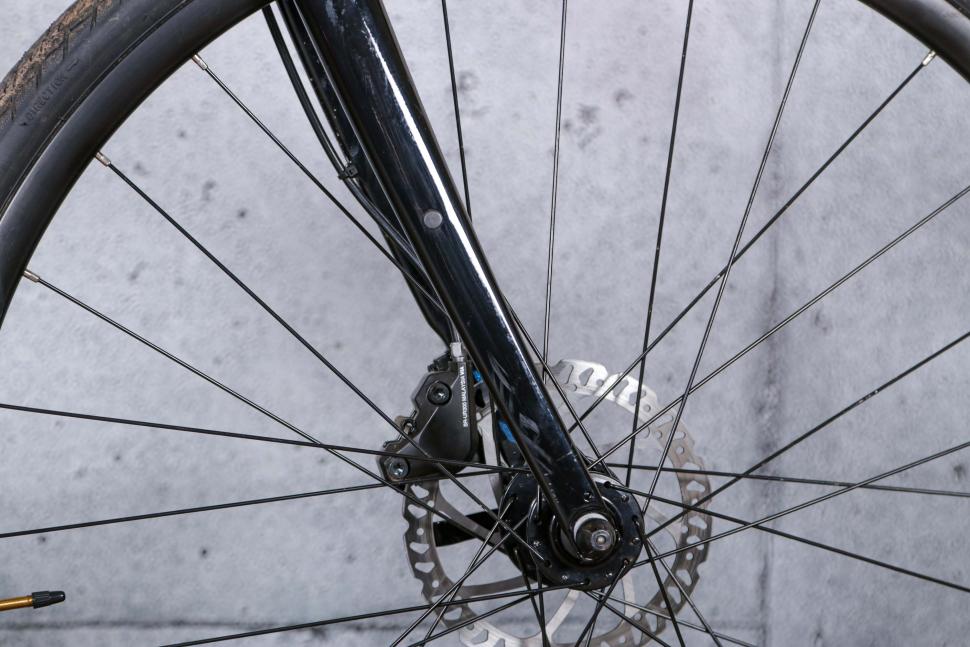
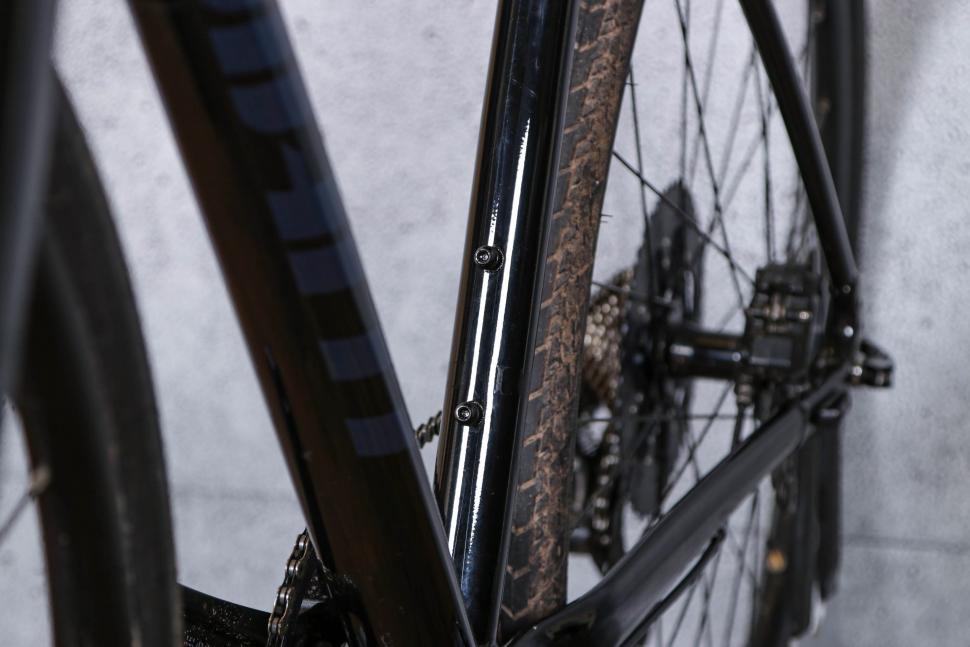
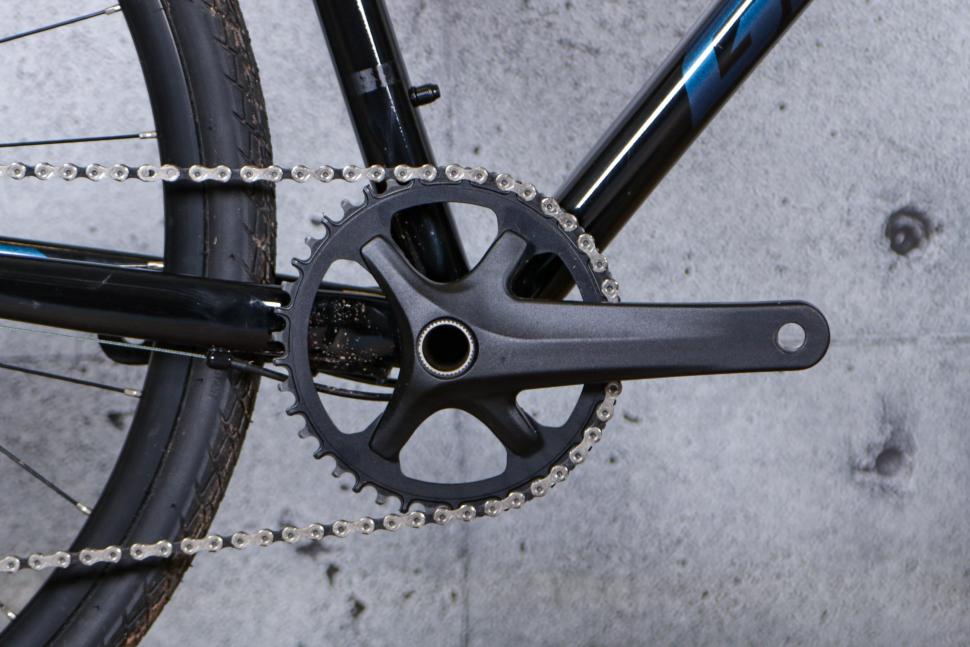
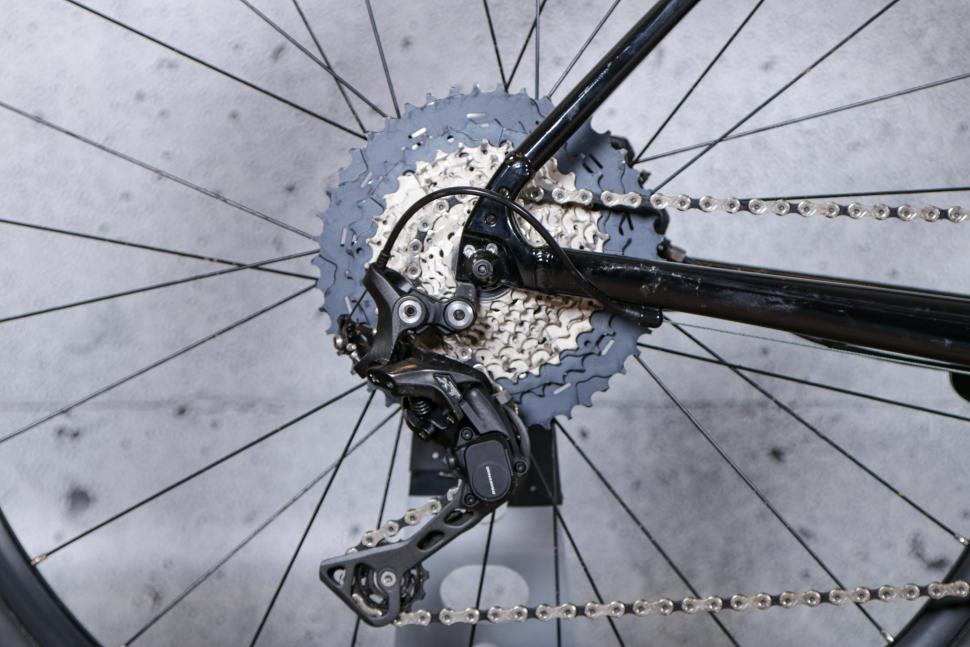
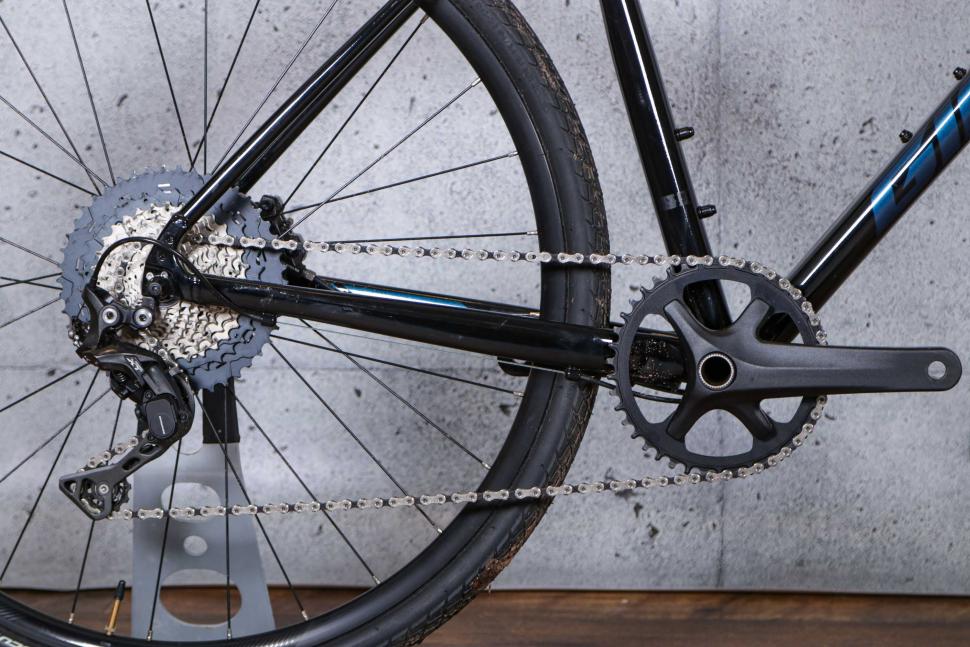
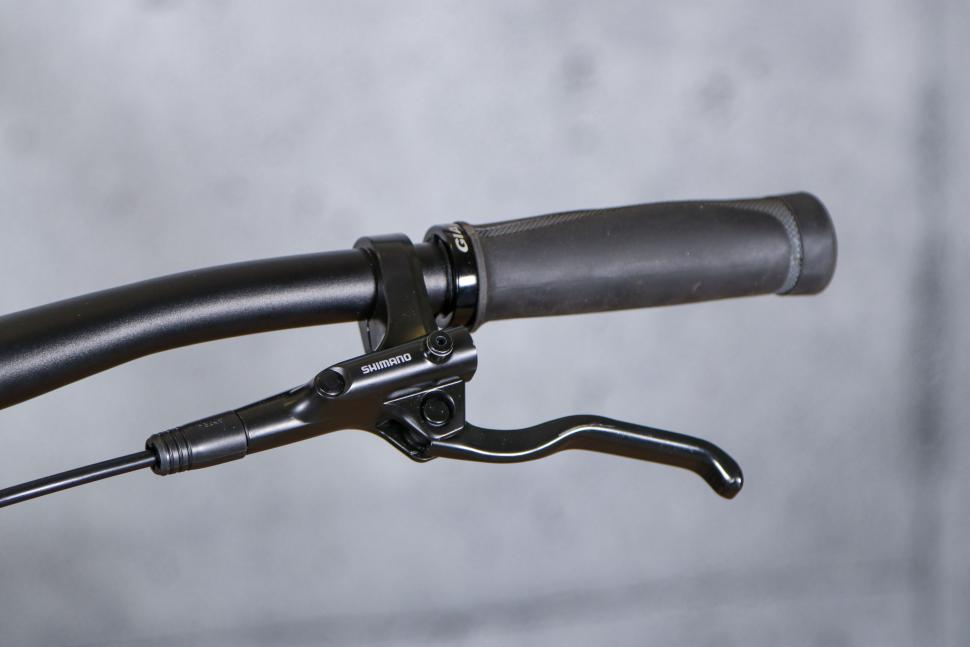
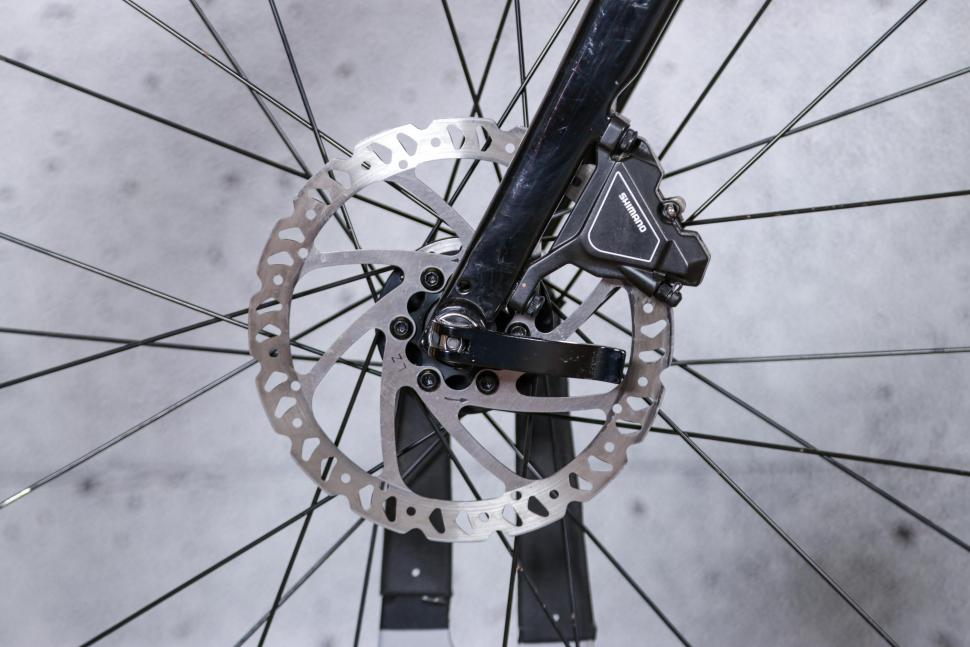

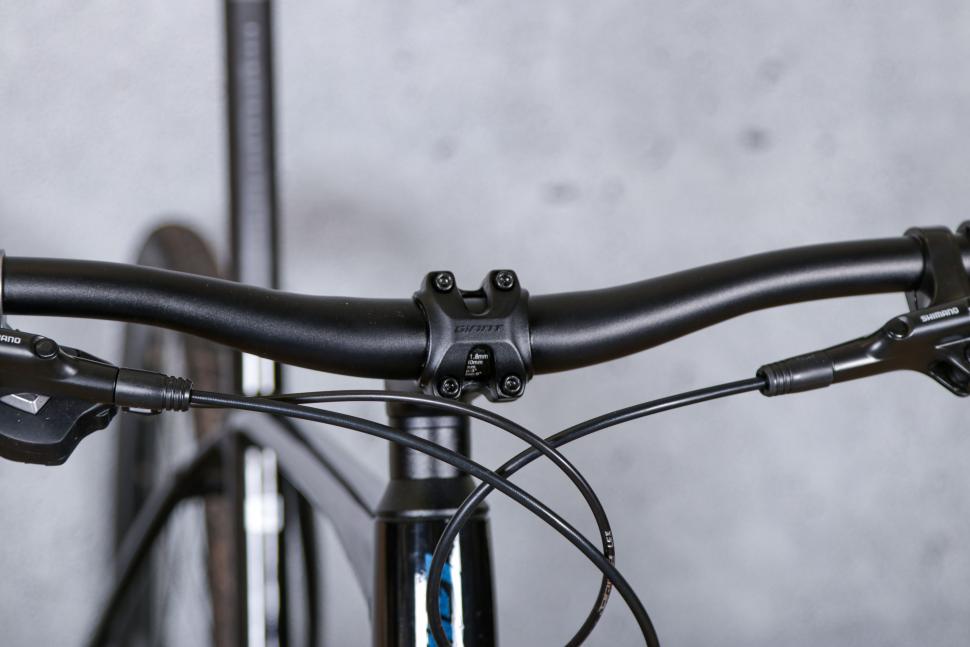
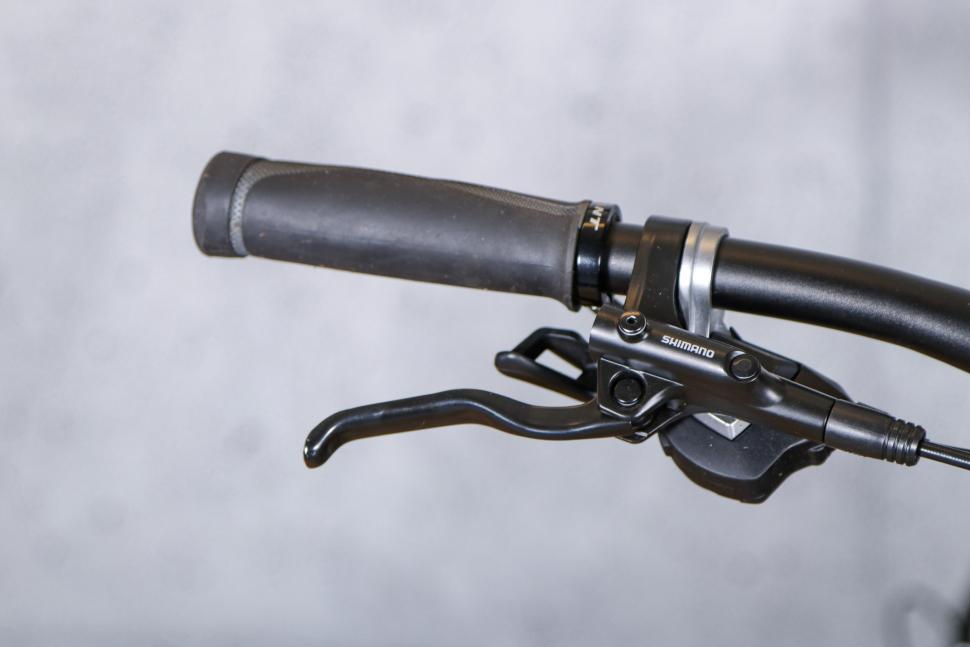
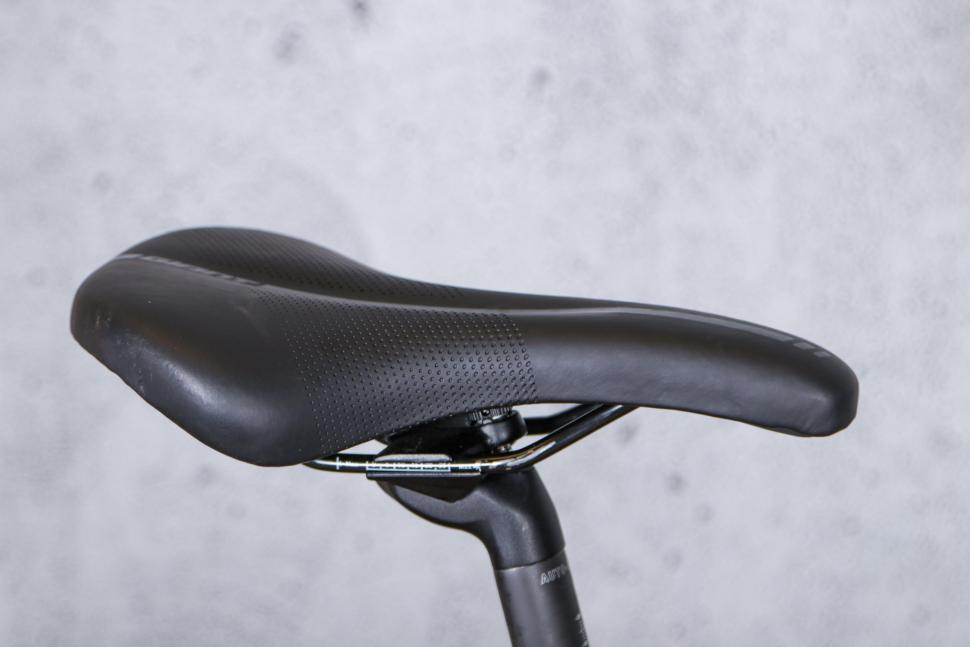
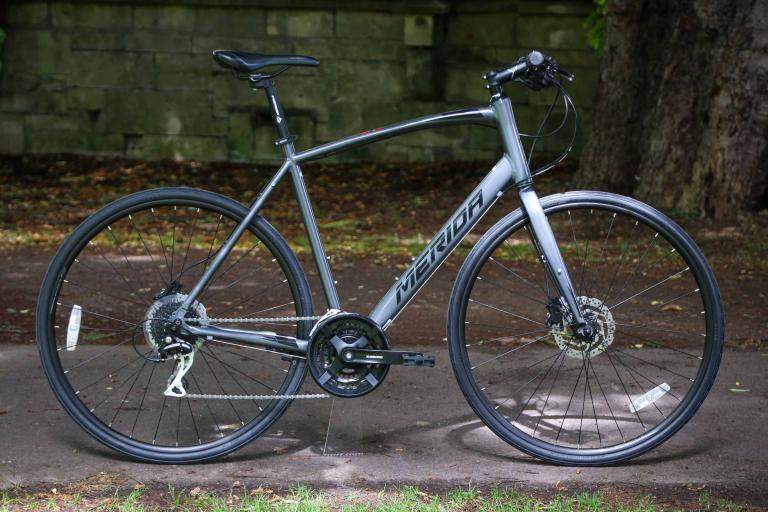
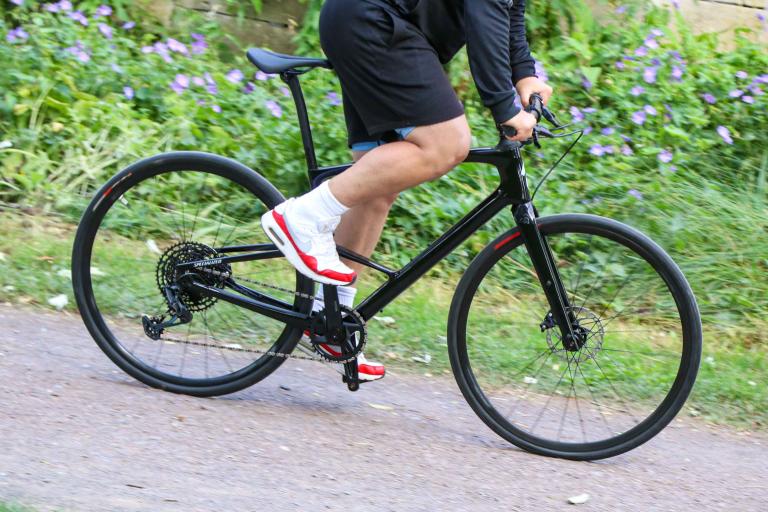
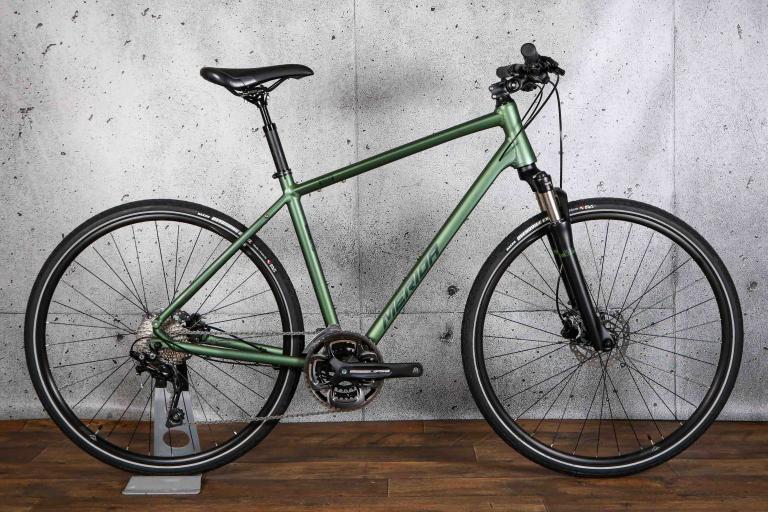
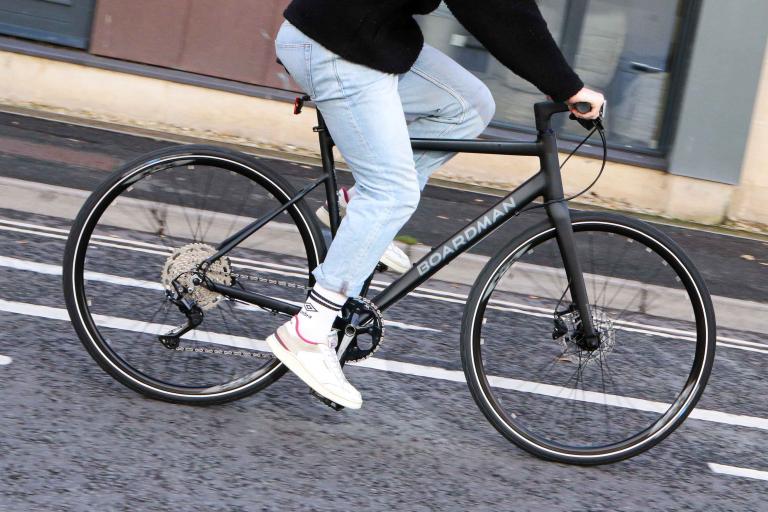
Add new comment
2 comments
I do like these bikes, they are great all rounders, my Rapid is the best commuter I have had, but why the push to single chainrings. You just end up with a gappy gear range and an expensive cassette that you can often only use a few cogs on and burn through quickly. On my allegedly flattish commute I have 50-34 and a 12-25 cassette and I can use a lot more cogs usefully.
Because the expense of replacing a worn cassette is yours. The expense of fitting multiple chainrings, front derailleur and levers would be theirs.